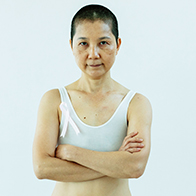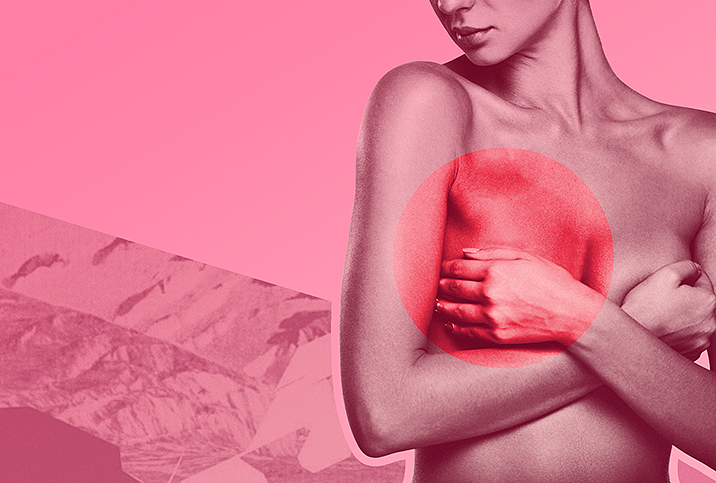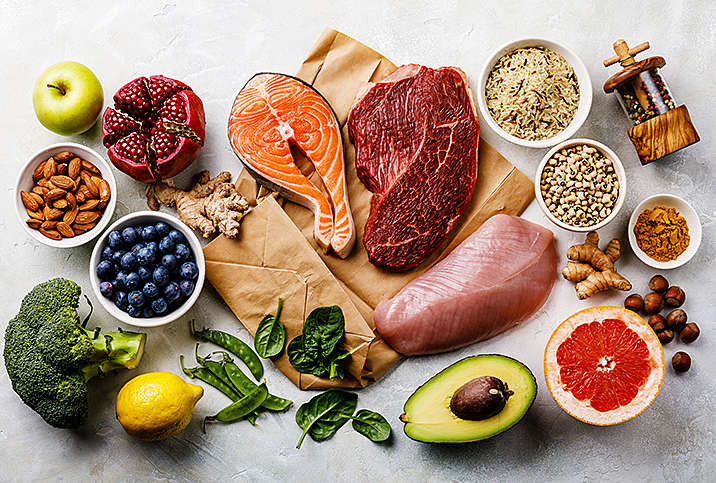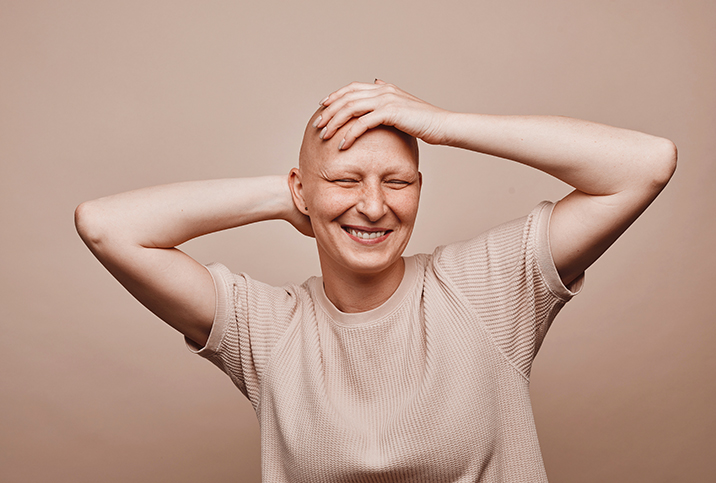Lumpectomy or Mastectomy? A Personal Choice

Years ago, when I was going through a tough time, Kristen said to me, "Just keep it moving." They were simple words, but they stuck with me, and whenever times were tough, I would whisper them under my breath.
Kristen and I were two young women trying to make it as transplants in New York City. We had been through a lot together, from breakups to lousy roommate situations. We met other extraordinary women along the way and formed a group of girlfriends. I later moved out of state, and she stayed, married a great guy from Jersey, and had two beautiful children, but our group of friends always kept in touch. We are family.
This connection most recently became significant when I realized I had forgotten to get my mammogram. My anxiety about it had me posting my frustrations on Facebook. I was frustrated that most insurance companies require women to first get a referral before scheduling a mammogram. As if any doctor would tell a woman over 40 no.
That Facebook post also reminded Kristen she was due for her own mammogram. She was still breastfeeding her daughter, and her physician suggested that she wait. When breastfeeding, breast tissue becomes very dense and it can be challenging to spot irregularities. The post also caught the attention of my sister-in-law, a retired mammogram technician, and others in the thread.
"Don't wait!" my sister-in-law wrote. "I can't tell you how many women I know who ended up with a bad breast cancer diagnosis after waiting or forgetting to get a mammogram." Her advice was all I needed to hear. I scheduled my mammogram, and it came back negative.
A few weeks later, Kristen scheduled her mammogram, and the results came back abnormal. The second scan confirmed something was wrong, and she was eventually diagnosed with invasive ductal carcinoma (IDC), the most common form of breast cancer. IDC is a form of cancer that starts in the milk ducts and spreads to the breast tissues.
Kristen's doctors found three small tumors in her breast that indicated stage 1 and stage 2 cancer. She needed to start chemo immediately. Additionally, she needed to make a critical decision: lumpectomy or mastectomy? All of this before her 40th birthday.
When treatment is a personal choice
Kristen's mother was a breast cancer survivor, and so was her grandmother, but Kristen's treatment would be much different and far more invasive. It turned out that due to HER2 receptors, a growth-promoting protein, one of the three tumors required chemotherapy. The presence of this protein meant that without the appropriate treatment, the cancer could grow and spread.
Kristen's doctors had a precise treatment plan, but she still had some decisions to make regarding breast conservation. This would also depend on how the tumors responded to the chemo. She reached out to different doctors to get additional opinions, and every doctor reported back a similar treatment plan.
This is a personal choice. Just because it is the right choice for one person does not make it the right choice for another.
"Patients, unfortunately, are left with limited options. I would find it hard to make a good decision if I was not presented with all the available options for treatment," said oncologist Janie Grumley, M.D.
Choosing between a lumpectomy and mastectomy was a hard decision to make, and Kristen's tumors needed to shrink enough to be a good candidate for lumpectomy. Benefits of a lumpectomy include the following:
- The procedure focuses only on the affected tissue, allowing patients to keep the natural shape of their breasts.
- The surgery is typically a same-day operation, allowing people to return home that day.
- A lumpectomy offers the same survival rate as a mastectomy.
While a lumpectomy is overall less invasive than mastectomy, there is a higher chance of recurrent cancer.
Some patients initially choose a lumpectomy, but if the surgery is unsuccessful, preserving the breasts entirely may no longer be an option. Kristen's doctors warned her that no matter her decision, she needed to be mentally prepared for the possibility of a mastectomy.
"Most women do not need a mastectomy now, since we can detect cancers early," Grumley said. "The only times when a mastectomy may be a better option is if the patient has had prior radiation therapy to the chest wall, which limits their ability to get other radiation therapy."
While a mastectomy can offer peace of mind, Kristen was surprised to learn that even people who have undergone the procedure still need to have regular breast exams because tumors can return and attach to the chest wall.
"Some patients with genetic mutations are more likely to be offered mastectomy and prophylactic mastectomy to prevent cancer; however, patients need to know that this does not completely eliminate the risk of developing cancer, and close follow-up is still required," Grumley further explained. "Screening imaging is no longer done, but clinical exams and imaging for symptoms need to be performed to ensure there is no cancer."
Grumley emphasized, "Lastly, this is a personal choice. Just because it is the right choice for one person does not make it the right choice for another. Talking through all the options is key to making the right choice for each patient."
The decision was difficult, but in the end, Kristen's tumors shrunk enough for her to choose a lumpectomy.
Keeping in touch through chemo
The pandemic kept us physically apart, and we made sure to keep in close communication through phone calls and texting. It bothers me that Kristen went through chemo without her friend group by her side, but she sent us photos while she received her infusions.
Kristen also told us how she used cold capping to help save her beautiful hair. Cold caps are tightly fitting helmets filled with a cold liquid or gel that narrows the blood vessels beneath the skin, reducing the amount of chemotherapy medicine touching the scalp. Thanks to that cold cap, Kristen managed to save 50 percent of her hair.
Chemo was hard, but Kristen fought through like a champ and was ready to take the next biggest hurdle––the lumpectomy. The doctors removed the tumors and most of the cancer—radiation would knock out the rest.
We joked about how she would get the fabulous boob job that would balance out her cup size. (She had always hated that one breast was larger than the other, and now she was entitled to adjustments for life.) It certainly isn't the best way to get cosmetic surgery, but we would take every silver lining we could.
A family of survivors
Kristen is a third-generation breast cancer survivor. Having an almost-2-year-old daughter, she explained it terrifies her to think of the risks her daughter faces. However, she will be prepared.
The American Cancer Society recommends women should begin getting regular mammograms between the ages of 40 and 44. Kristen believes women should begin receiving mammograms at 35 rather than 40, because many women do not know their family health history and that waiting until 40 cuts it too close. It is important to know she did not test positive for the BRCA gene, and that women should not rely solely on this particular test as a risk marker.
She has a long road ahead and will continue to receive radiation and hormone suppression injections for several years to block high estrogen levels, a contributing cause of her type of cancer. For now, she is also immunocompromised, but the worst is over.
Kristen told me that belonging to Facebook groups, such as the New Jersey Breast Cancer Group, helped her get quick answers to her questions. Having survivors to talk to or people who are going through the same thing provided unlimited emotional support. Times have been tough for my best friend, and her bravery makes her a champion for all women. But for me, it's more than that: She is my hero.
Even during her darkest hour, Kristen managed, as always, to keep it moving.




















